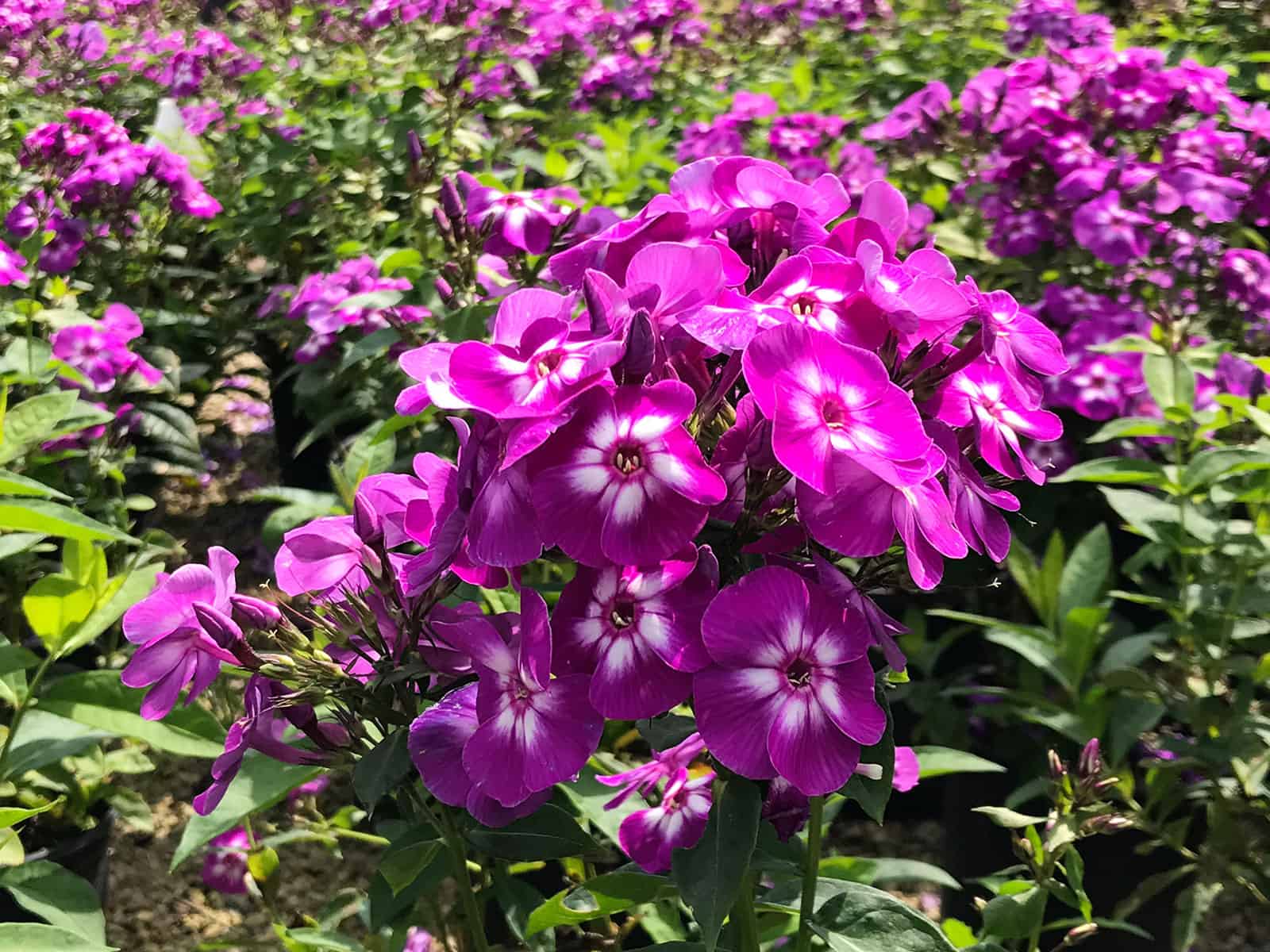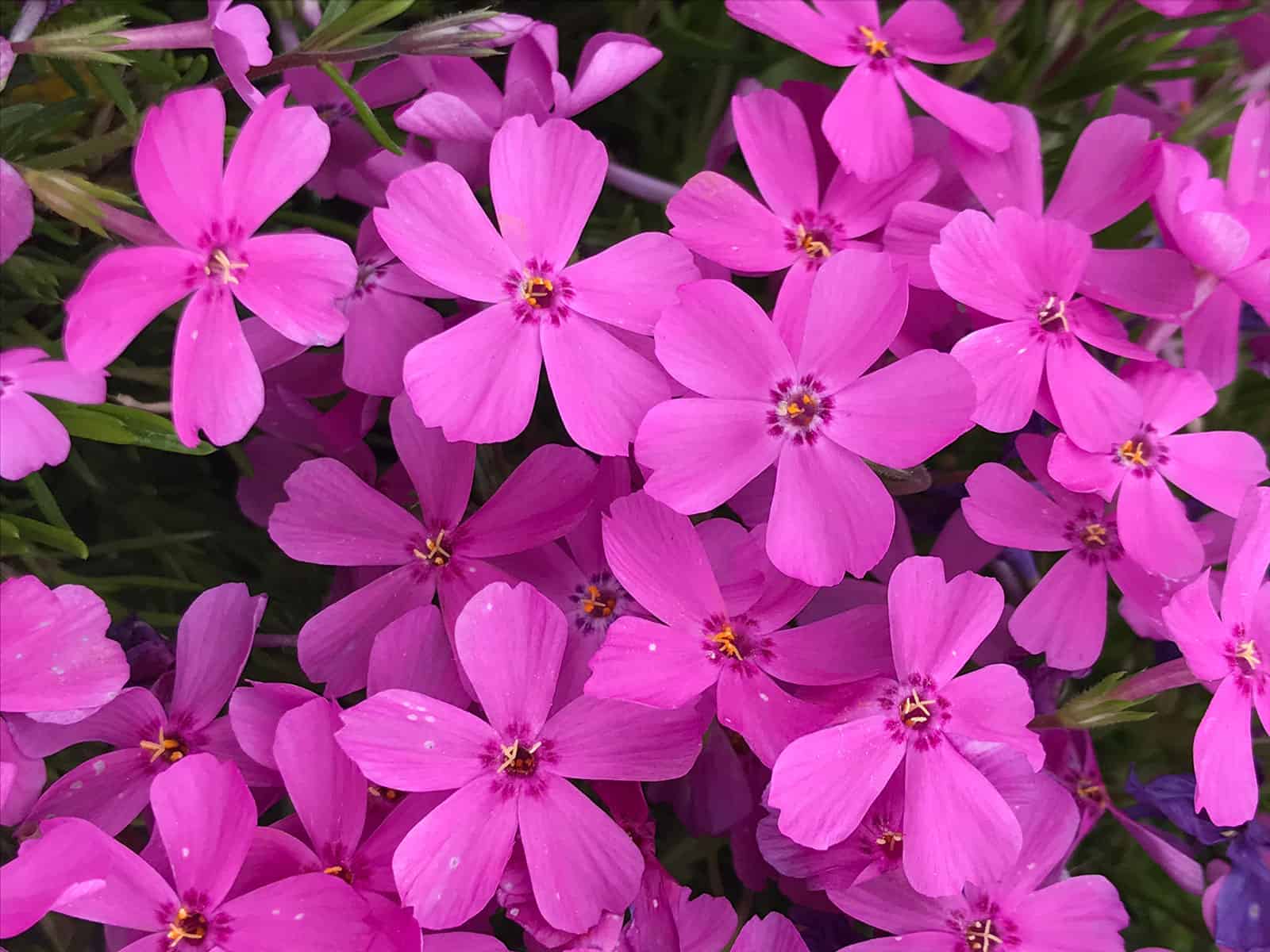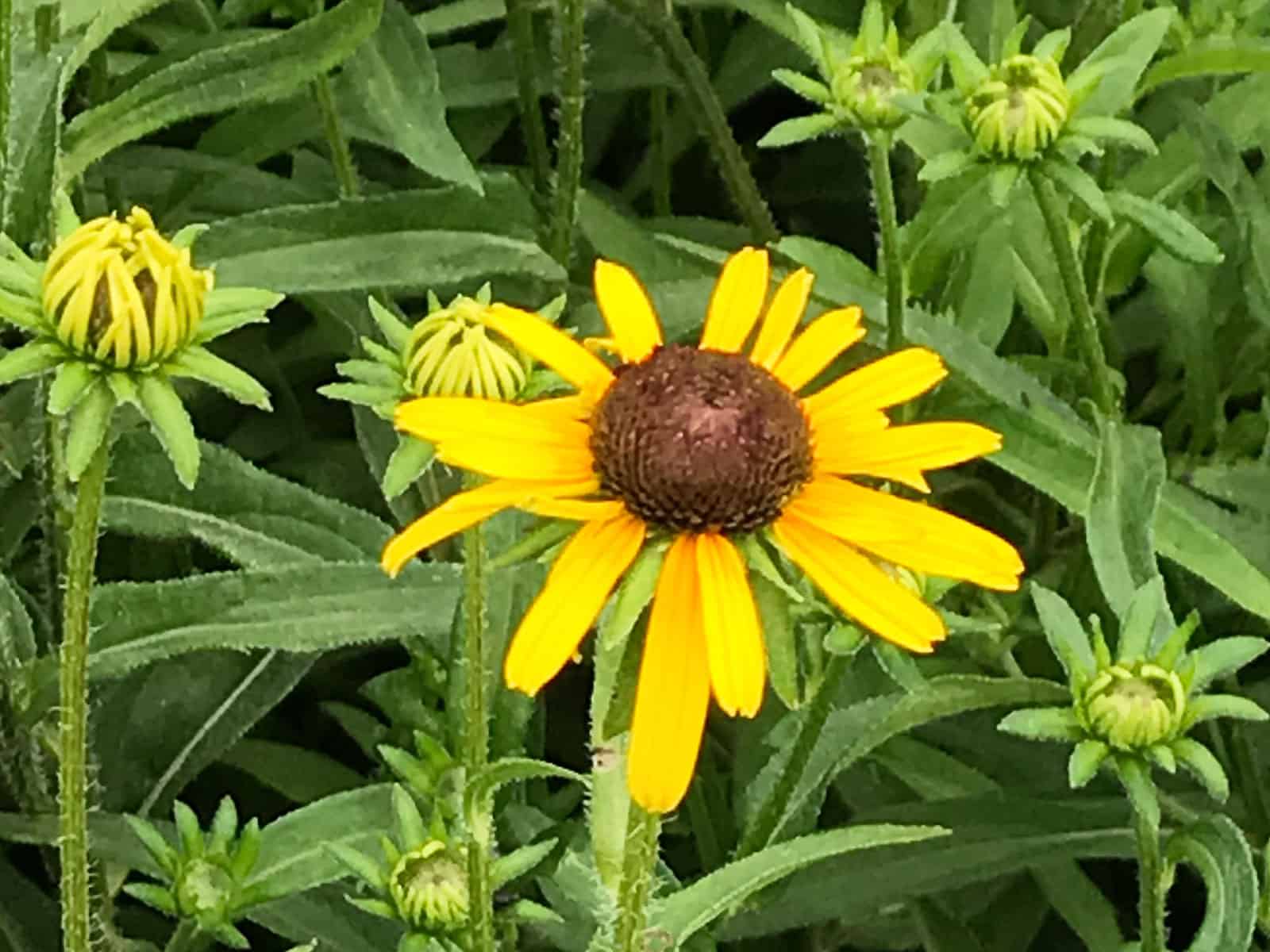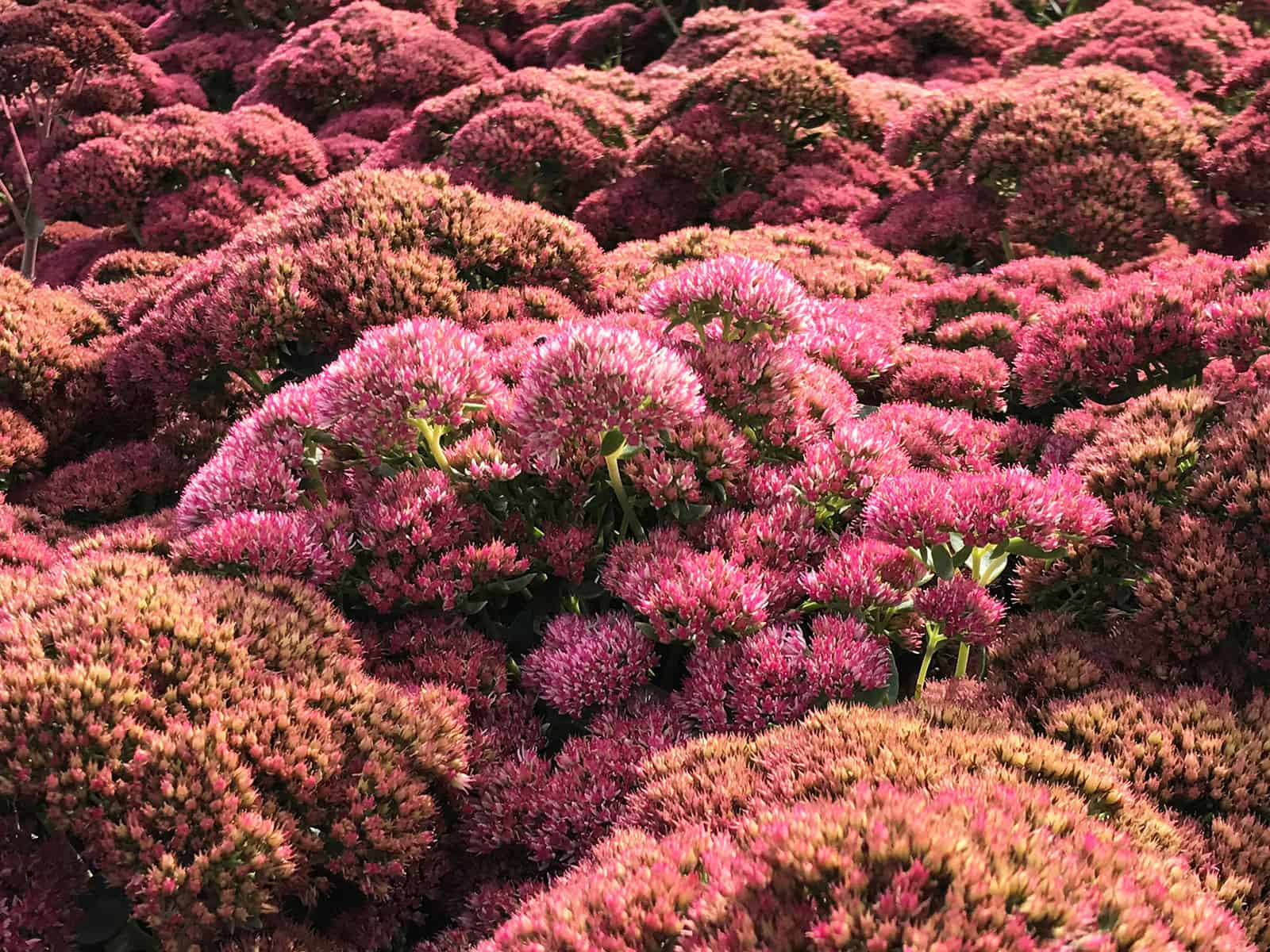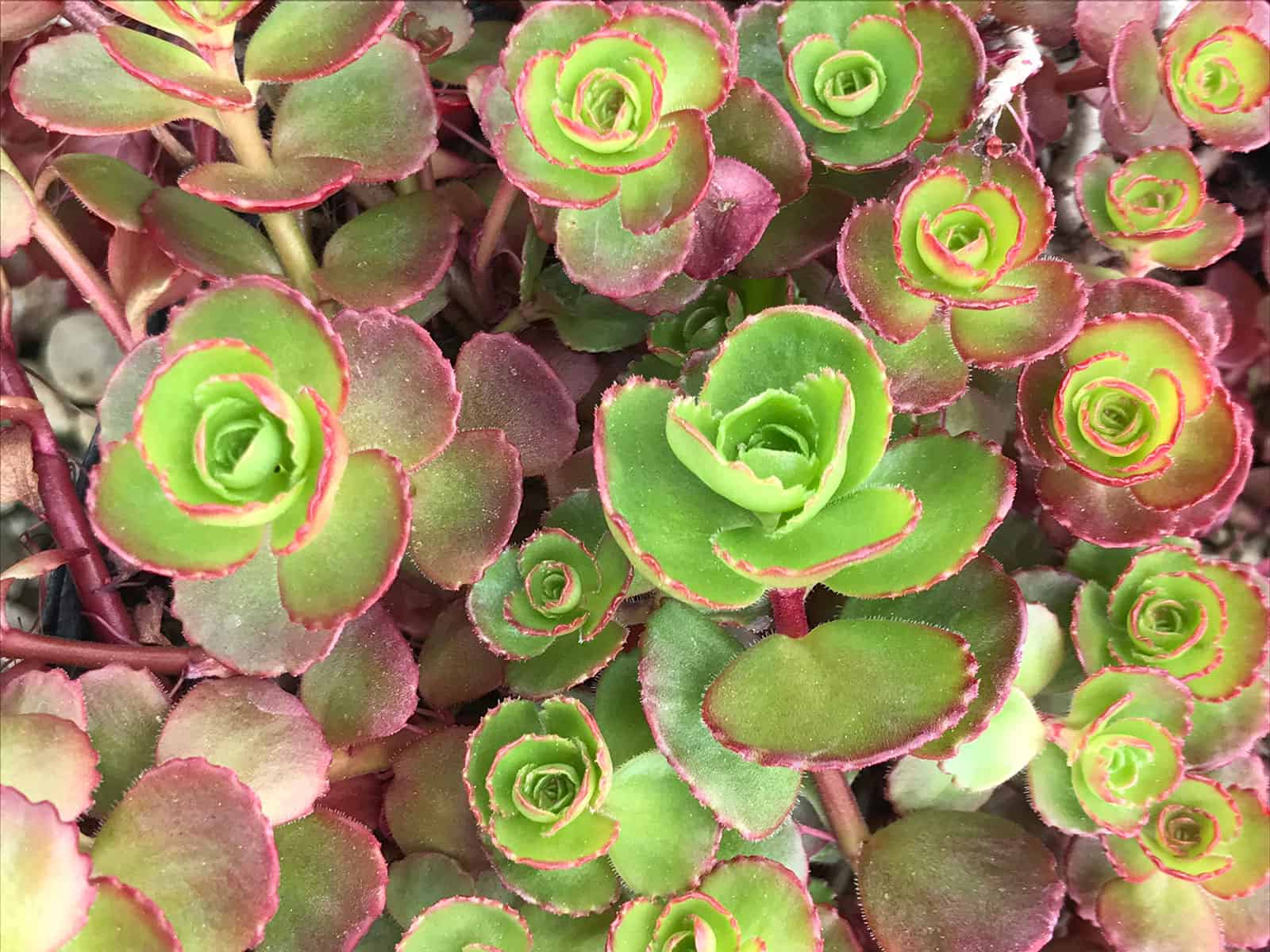Laura garden phlox blooms in mid-summer with round heads of large, lavender-purple flowers that are delightfully fragrant. The foliage is mildew resistant and this perennial grows easily in compost enriched garden soil.
24-30″ tall x 18″ wide (cutting propagated). If you love flowers with rich, saturated colors (and who doesn’t!), Phlox ‘Laura’ is a “must have” cultivar for your perennial flower beds. The white-eyed deep lavender-purple flowers are are deliciously fragrant. The plant’s foliage has excellent mildew resistance making it a wonderful, low maintenance garden phlox. Plant ‘Laura’ in compost enriched garden loam and irrigate regularly.
There are many selections of Moss Phlox, all of them forming a low mound or cushion of dark green needle-like leaves, smothered by tiny flowers in late spring. This is a vigorous variety, with a showy display of deep lavender-blue flowers. Exhibits excellent disease resistance. Clip plants lightly immediately after blooming to encourage a dense habit. Wonderful in the sunny rock garden, for edging, or in mixed containers. Clumps may be ripped apart and divided in early fall, after 3 to 4 years. Requires good drainage. Drought tolerant, once established.
There are many selections of Moss Phlox, all of them forming a low mound or cushion of dark green needle-like leaves, smothered by tiny flowers in late spring. This variety produces a showy display of hot-pink flowers and has a medium-fast growth rate. Clip plants lightly immediately after blooming to encourage a dense habit. Wonderful in the sunny rock garden, for edging, or in mixed containers. Clumps may be ripped apart and divided in early fall, after 3 to 4 years. Requires good drainage. Drought tolerant, once established.

It is an herbaceous perennial growing up to 120 cm (47 in) tall, with bright yellow daisy-like composite flower heads.
Growth and reproduction: In the garden, this plant spreads aggressively by both stoloniferous stems and seed. The seeds are produced in fruits called cypselae, which are 2.2 to 4 mm long and have short coroniform pappi, 0.2 mm long. The ripe seed is a favorite food of finches in winter.
Morphology: Stems are hairy, ridged, and dark green. Leaves are dark green, sparsely but roughly haired, simple, with sparsely serrate margins. Flowers are heads, with black disk florets and bright orange ray florets, borne singly on stems that extend above the foliage. Stems are glabrous or moderately covered in hirsute hairs with spreading branches. The leaves have blades that are lanceolate to broadly ovate or elliptic in shape without lobes. The leaf bases are attenuate to cordate in shape and the margins of the leaves are usually entire or serrate, or sometimes lacerate. The upper surfaces of the leaves are glabrous or have hirsute to strigose hairs. The basal leaves are petiolate, with petioles that are 5 to 30 cm long and 1 to 8 cm wide, the cauline or stem leaves have petioles that are 2 to 25 cm long and 0.5 to 7 cm wide, the bases are attenuate to cordate or auriculate in shape.
The flower heads are often produced one per stem but are also often produced in corymbiform arrays with 2 to 7 flowers per stem. The cups that hold the flowers called receptacles, are hemispheric to ovoid in shape with paleae 2.5 to 4 mm long, the apices are obtuse to acute in shape with the ends usually glabrous and the apical margins ciliate. The flower heads have 10 to 15 ray florets with laminae elliptic to oblanceolate in shape and 15–25 cm long and 3 to 6 mm wide. The abaxially surfaces of the laminae have strigose hairs. The flower discs or center cones are 12 to 16 mm tall and 10 to 18 mm wide, made up of 50 to over 500 disc florets, with the corollas proximally yellowish green and brown-purple distally in color, 3 to 4.2 mm long, having style branches 1.3 mm long.

Culture: Easily grown in dry to medium, organically rich to average, well-drained soils in full sun. Best bloom occurs in full sun, although plants will tolerate some light shade. Plants prefer consistent moisture throughout the growing season, with some tolerance for drought once established. Good air circulation is appreciated. Deadhead spent flowers to encourage additional bloom. Plants slowly spread in the garden by rhizomes.
Noteworthy Characteristics: Rudbeckia fulgida is a Missouri native which occurs in both dry and moist soils in open woods, glades and thickets. An upright, rhizomatous, clump-forming, free-blooming coneflower which typically grows to 3′ tall, often forming colonies in the wild. Features daisy-like flowers (to 2.5″ across) with yellow rays and brownish-purple center disks. Prolific bloom production over a long mid-summer to fall bloom period. Oblong to lanceolate, medium green foliage. Good cut flower.
Genus name honors Olof Rudbeck (1630-1702) Swedish botanist and founder of the Uppsala Botanic Garden in Sweden where Carl Linnaeus was professor of botany.
Specific epithet means shining or glistening.
VIETTE’S LITTLE SUZY is a compact, upright, rhizomatous, clump-forming, free-blooming coneflower which typically grows only 10-15″ tall. Features daisy-like flowers with yellow rays and dark brownish-purple center disks. Prolific flower production over a long mid-summer-to-fall bloom period. Oblong to lanceolate, medium green foliage. Good fresh cut flower.
Problems: No serious insect or disease problems.
Garden Uses: Mass in bold drifts in the perennial border, cottage garden, meadow, native plant garden or naturalized area. Provides excellent bloom and color for the late summer. Good cut flower.
A compact cultivar.
Salvia nemorosa ‘May Night’. Garden sage. One of the most commonly used salvias in the northeastern US, it is covered in striking dark violet-blue flower spikes in May and June and remains upright and tidy throughout the season. Attracts birds, butterflies and bees. Makes an excellent cut flower, fresh or dried, and its leaves are freshly aromatic.
A terrific low evergreen groundcover for sunny areas with poor dry soil. This forms a trailing mat of succulent golden-yellow leaves. Clusters of yellow starry flowers appear during the summer. When planted in containers or on a wall this develops a beautiful cascading habit. Plants may be pruned back at any time if they get too large. Foliage sometimes develops beautiful amber tones in the autumn and winter. Does well in large rock gardens where the plants can be given room to spread. Best with occasional to no foot traffic. Drought tolerant. Registered with COPF: royalty required for propagation.
The border varieties of Stonecrop are a dependable choice for the late summer and fall garden, offering foliage interest earlier in the season, then a colourful display of flowers in the fall. This Canadian selection is an improvement on the older Autumn Joy, with a taller habit and stronger, less floppy stems. Plants begin to produce green broccoli-like buds in mid-summer, which gradually open into enormous dusty-rose flower heads, finally deepening to rich rusty-red during autumn. Even the dead flower heads have good winter effect. An outstanding cut flower, and also attractive to butterflies. Registered with COPF: royalty required for propagation.

Culture: Easily grown in acidic, average, dry to medium moisture, well-drained soils in full sun. Tolerates some light shade. Likes sandy or gravelly soils. Tolerates poor soils. Needs good soil drainage to perform well. Drought tolerant. Avoid overwatering. Plants may be sited 12” apart when grown as a ground cover. Easily propagated by cuttings or division. Plants spread easily (root where nodes touch the ground). Cut a leaf from a healthy sedum with about 1-2″ of stem and plant the stem with the leaf above soil. Plants are evergreen in warm winter climates.
Noteworthy Characteristics: Sedum spurium, commonly called Caucasian stonecrop or two row stonecrop, is a low-growing, sprawling, mat-forming sedum or stonecrop that is commonly grown as a ground cover. It is native to the Caucusus. This is an evergreen plant that typically rises only 3-6” tall but spreads to 18-24” wide by creeping, branching stems that easily root at the nodes. Thick, succulent, opposite, obovate, flattened leaves (to 1” long) with wedge-shaped bases are toothed near the ends. Leaves are medium green with reddish-tinged margins. Lower stem leaves are deciduous, but newer leaves near the stem tips are evergreen, typically turning deep burgundy in fall for overwintering. Leaves are arranged in two rows along the stems, hence the sometimes used common name of two row stonecrop. Tiny, 5-petaled, star-shaped, pinkish-red flowers (to 3/4” diameter) in dense, 4-branched inflorescences (to 4-6″ tall) bloom from late spring to mid-summer (June-July in St. Louis) atop upright reddish flower stems. Flowers are attractive to butterflies.
Genus name comes from the Latin word sedeo meaning to sit in reference to the general growing habit of many of the sedums (they sit and sprawl over rocks).
Specific epithet means false. Its use here is unclear.
‘Fuldaglut’ is a low-growing, mat-forming, maroon-leaved cultivar that grows 2-3” tall but spreads to 18” wide. Leaves are attractive throughout the growing season. Foliage is semi-evergreen in St. Louis winters.
Problems: No serious insect or disease problems. Slugs and snails may appear. Watch for scale.
Garden Uses: Rock garden or small area ground cover. Border fronts. Stone wall pockets. Sunny banks or slopes. Edging. Containers. Best when planted in groups or massed as a ground cover.
This tough, drought-tolerant species has glossy deep green leaves and, in early summer, half-inch golden yellow flowers that open from pink buds. It grows to about 6 inches tall and a little wider and makes a good groundcover.
Noteworthy Characteristics: Long-lasting, star-like, golden yellow flowers.
Care: Grow in well-drained soil of moderate fertility that is neutral to slightly alkaline. Full sun.
Propagation: Take stem cuttings or root leaves in early summer. Start seed in fall. Divide in spring.
Problems: Mealybugs, scale insects, slugs, and snails can be problems.
Read more: http://www.finegardening.com/stonecrop-sedum-kamtschaticum#ixzz53nFjuIzC
